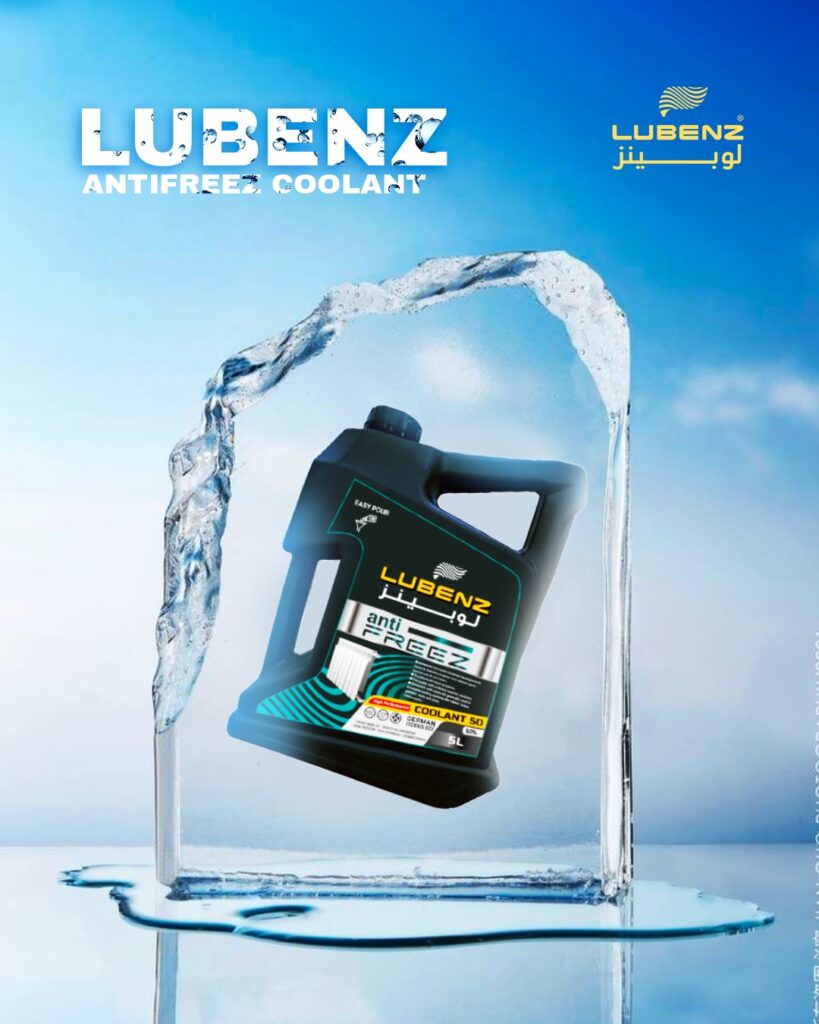LUBRICANTS wholesaler in Kenya
LUBRICANTS supplier in Kenya
LUBRICANTS Manufacturer in Kenya
The need for lubricants spans across various sectors, driven by their essential role in maintaining and enhancing the performance, efficiency, and longevity of machinery and equipment. Here are the key needs for lubricants:
Automotive Sector
Engine Protection: Lubricants are crucial for protecting engine components from wear and tear, reducing friction, and preventing overheating.
Fuel Efficiency: High-quality lubricants improve fuel efficiency by ensuring smoother engine operation, which is essential for cost savings and environmental sustainability.LUBRICANTS Manufacturer in Kenya LUBRICANTS Manufacturer in Kenya LUBRICANTS Manufacturer in Kenya LUBRICANTS Manufacturer in Kenya LUBRICANTS Manufacturer in Kenya
Vehicle Maintenance: Regular lubrication is necessary to ensure the reliability and longevity of vehicles, reducing the frequency of repairs and replacements.
Industrial Sector
Machinery Efficiency: Industrial machines require lubricants to minimize friction, prevent wear, and maintain operational efficiency.
Downtime Reduction: Proper lubrication reduces the risk of machinery breakdowns, leading to fewer interruptions in production processes and increased productivity.
Maintenance Costs: Using the right lubricants helps lower maintenance costs by extending the lifespan of machinery and reducing the need for frequent repairs.
Agricultural Sector. LUBRICANTS Manufacturer in Kenya LUBRICANTS Manufacturer in Kenya LUBRICANTS Manufacturer in Kenya LUBRICANTS Manufacturer in Kenya LUBRICANTS Manufacturer in Kenya
Equipment Performance: Agricultural machinery, such as tractors and harvesters, needs lubricants to operate efficiently and withstand heavy use.
Yield Maximization: Efficiently lubricated equipment ensures optimal performance, which is critical for maximizing agricultural yields and supporting food security.
Operational Reliability: Regular lubrication is essential for maintaining the reliability of farming equipment, preventing unexpected breakdowns during crucial farming periods.
Construction Sector
Heavy Equipment Maintenance: Construction equipment, including excavators, bulldozers, and cranes, require lubricants to handle heavy loads and harsh conditions.
Operational Efficiency: Proper lubrication ensures that construction machinery operates efficiently, reducing fuel consumption and operational costs.
Durability: Lubricants help in prolonging the lifespan of construction equipment, making them more durable and cost-effective in the long run.LUBRICANTS Manufacturer in Kenya LUBRICANTS Manufacturer in Kenya LUBRICANTS Manufacturer in Kenya LUBRICANTS Manufacturer in Kenya LUBRICANTS Manufacturer in Kenya LUBRICANTS Manufacturer in Kenya V LUBRICANTS Manufacturer in Kenya LUBRICANTS Manufacturer in Kenya LUBRICANTS Manufacturer in Kenya LUBRICANTS Manufacturer in Kenya LUBRICANTS Manufacturer in Kenya LUBRICANTS Manufacturer in Kenya
Environmental Sustainability
Emission Reduction: Lubricants that enhance engine efficiency contribute to lower emissions, helping in the fight against climate change.
Waste Management: The need for proper disposal and recycling of used lubricants is crucial to minimize environmental pollution and promote sustainable practices.
Energy Conservation: By reducing friction and improving energy efficiency, lubricants play a significant role in conserving energy and reducing overall energy demand.
General Operational Needs
Safety: Lubricants ensure the safe operation of machinery and vehicles by preventing overheating and reducing the risk of mechanical failures.
Performance Optimization: Regular and appropriate lubrication is necessary for optimizing the performance of engines and machinery, ensuring they function at their best.
Cost Efficiency: The use of high-quality lubricants leads to significant cost savings by enhancing efficiency, reducing maintenance needs, and extending the lifespan of equipment.
Conclusion
Lubricants are indispensable across various sectors due to their critical role in maintaining equipment performance, reducing operational costs, and promoting environmental sustainability. Their proper use and management are essential for ensuring the efficiency, reliability, and longevity of machinery and vehicles, ultimately supporting economic growth and development.
LUBRICANTS Manufacturer in Kenya LUBRICANTS Manufacturer in Kenya LUBRICANTS Manufacturer in Kenya LUBRICANTS Manufacturer in Kenya LUBRICANTS Manufacturer in Kenya LUBRICANTS Manufacturer in Kenya LUBRICANTS Manufacturer in Kenya LUBRICANTS Manufacturer in Kenya LUBRICANTS Manufacturer in Kenya
Lubricants have several key positive impacts in Kenya, influencing the economy, environment, and operational efficiency across various sectors. Here are the main positive impacts:
Economic Impacts
Enhanced Productivity: Lubricants improve the efficiency and performance of machinery and vehicles, leading to higher productivity in industries such as manufacturing, agriculture, and construction. This increased productivity translates into economic growth and stability.
Cost Savings: By reducing friction and wear, lubricants lower maintenance and repair costs. This extends the lifespan of equipment, resulting in significant cost savings for businesses and individuals.
Job Creation: The lubricants industry creates employment opportunities in manufacturing, distribution, sales, and recycling. This supports local economies and contributes to overall economic development.
Environmental Impacts
Reduced Emissions: High-quality lubricants enhance engine and machinery efficiency, leading to lower fuel consumption and reduced greenhouse gas emissions. This helps combat climate change and promotes environmental sustainability.
Waste Management: Proper disposal and recycling of used lubricants minimize environmental pollution. This promotes cleaner and healthier ecosystems, supporting biodiversity and human health.
Energy Efficiency: Lubricants improve the energy efficiency of engines and machinery, reducing overall energy demand. This conservation of energy resources contributes to a more sustainable environment.
Operational Efficiency.LUBRICANTS Manufacturer in Kenya LUBRICANTS Manufacturer in Kenya LUBRICANTS Manufacturer in Kenya LUBRICANTS Manufacturer in Kenya LUBRICANTS Manufacturer in Kenya LUBRICANTS Manufacturer in Kenya LUBRICANTS Manufacturer in Kenya LUBRICANTS Manufacturer in Kenya LUBRICANTS Manufacturer in Kenya
Improved Reliability: Regular use of lubricants ensures the smooth and reliable operation of machinery and vehicles. This reduces downtime and increases operational efficiency across various sectors.
Safety Enhancement: Lubricants help maintain the proper functioning of equipment, reducing the risk of mechanical failures and accidents. This ensures safer working conditions for employees.
Performance Optimization: Lubricants optimize the performance of engines and machinery, ensuring they operate at their best. This leads to better outcomes in productivity and quality of work.
Sector-Specific Impacts
Automotive Sector: Lubricants are essential for vehicle maintenance, improving fuel efficiency, and extending engine life. This ensures reliable transportation, which is crucial for commerce and daily life in Kenya.
Industrial Sector: In manufacturing, lubricants maintain the efficiency and longevity of machinery, reducing production costs and increasing competitiveness.
Agricultural Sector: Lubricants are vital for farming equipment, ensuring efficient and uninterrupted operations. This maximizes agricultural yields and supports food security.
Construction Sector: Lubricants enable construction equipment to handle heavy loads and harsh conditions, enhancing operational efficiency and reducing project costs.
Conclusion
The positive impacts of lubricants in Kenya are extensive, contributing significantly to economic growth, environmental sustainability, and operational efficiency. By enhancing productivity, reducing costs, and supporting sustainable practices, lubricants play a vital role in the development and progress of various sectors in Kenya. Their proper use and management are essential for maximizing these benefits and ensuring long-term positive impacts.
While lubricants provide numerous benefits, they also have some negative impacts, particularly if not managed properly. Here are the key negative impacts of lubricants in Kenya:
Environmental Impacts
Pollution: Improper disposal of used lubricants can lead to soil and water contamination, harming ecosystems and biodiversity. Spillage and leakage during use or transportation can also contribute to environmental pollution.
Non-Biodegradability: Many lubricants are non-biodegradable, leading to long-term environmental persistence. This can cause significant ecological damage if they enter natural habitats.
Resource Depletion: The production of lubricants often relies on non-renewable resources, such as petroleum. This contributes to resource depletion and has associated environmental impacts, including greenhouse gas emissions from extraction and refining processes.
Health Impacts
Exposure Risks: Handling and using lubricants can pose health risks to workers if proper safety measures are not followed. Exposure to certain chemicals in lubricants can lead to skin irritations, respiratory issues, and other health problems.
Toxicity: Some lubricants contain toxic substances that can be harmful to human health and the environment. This includes additives and by-products formed during their use.
Economic Impacts
Cost of Management: Proper disposal and recycling of used lubricants can be costly. These costs can be a burden for small businesses and individuals.
Dependence on Imports: Many high-quality lubricants are imported, which can lead to economic dependencies and vulnerabilities related to global supply chain fluctuations and foreign exchange rates.
Operational Impacts
Equipment Damage: Using incorrect or low-quality lubricants can cause equipment damage, leading to increased maintenance costs and downtime.
Fire Hazards: Lubricants, being flammable, pose a fire risk if not stored and handled correctly. This can result in property damage and safety hazards in industrial and automotive settings.
Regulatory and Compliance Challenges
Compliance Costs: Adhering to environmental and safety regulations related to lubricants can incur additional costs for businesses. Non-compliance can result in fines and legal issues.
Counterfeit Products: The market can be infiltrated by counterfeit or substandard lubricants, which can harm equipment and increase operational risks.
Conclusion
While lubricants are essential for various sectors in Kenya, they come with negative impacts that need careful management. Environmental pollution, health risks, economic costs, and operational hazards are significant concerns. Proper handling, disposal, and regulatory compliance are crucial to mitigate these negative impacts and ensure the safe and sustainable use of lubricants.
There are several myths surrounding lubricants that can lead to misunderstandings and improper use. Here are some common myths about lubricants:
Common Myths About Lubricants
Myth: All Lubricants Are the Same
Reality: Lubricants vary significantly in terms of formulation, quality, and intended use. Different engines and machinery require specific types of lubricants to operate efficiently and safely. Using the wrong type can lead to poor performance and damage.
Myth: Synthetic Lubricants Are Always Better Than Conventional Lubricants
Reality: While synthetic lubricants offer advantages such as better performance in extreme temperatures and longer service life, they are not always necessary for all applications. Conventional lubricants can be adequate and more cost-effective for certain engines and machinery.
Myth: Lubricants Do Not Expire
Reality: Lubricants have a shelf life and can degrade over time. Expired or degraded lubricants can lose their effectiveness, leading to inadequate protection and potential damage to machinery and engines.
Myth: Adding More Lubricant Is Always Better
Reality: Over-lubrication can be just as harmful as under-lubrication. Excess lubricant can cause increased friction, overheating, and damage to seals and gaskets. It's important to use the correct amount as specified by the manufacturer.
Myth: You Only Need to Change Lubricants When They Look Dirty
Reality: Lubricants can lose their protective properties before they appear dirty. Relying solely on visual inspection can result in running machinery with ineffective lubrication. Regularly scheduled changes based on manufacturer recommendations are essential.
Myth: Once You Use a Synthetic Lubricant, You Can't Switch Back to Conventional
Reality: Switching between synthetic and conventional lubricants is possible, provided the system is properly flushed and cleaned to prevent contamination. However, it’s essential to follow manufacturer guidelines and recommendations when making such changes.
Myth: All Lubricants Are Environmentally Harmful
Reality: While some lubricants contain harmful chemicals, there are many environmentally friendly options available. Biodegradable and less toxic lubricants are increasingly being developed to minimize environmental impact.
Myth: Thicker Lubricants Provide Better Protection
Reality: The viscosity of a lubricant must match the specific requirements of the engine or machinery. Using a lubricant that is too thick can cause inadequate flow and increased wear, while one that is too thin may not provide sufficient protection.
Myth: You Can Mix Different Types of Lubricants Without Issues
Reality: Mixing different types of lubricants, such as synthetic and conventional or different brands, can result in chemical incompatibilities. This can reduce the lubricant's effectiveness and potentially harm the machinery.
Myth: Lubricants Only Need to Be Changed After a Certain Number of Miles or Hours
Reality: While mileage and hours of operation are important, other factors such as operating conditions, engine type, and usage patterns can also influence lubricant life. It's important to consider all these factors and follow comprehensive maintenance guidelines.
Conclusion
Understanding the facts behind these myths is crucial for the proper use and maintenance of lubricants. This ensures optimal performance, longevity of equipment, and prevents unnecessary damage and costs. Always refer to manufacturer recommendations and industry best practices when selecting and using lubricants.
The lubricants industry is evolving rapidly, driven by technological advancements, regulatory changes, and shifting market demands. Here are some current trends:
Sustainability: There's a growing emphasis on eco-friendly lubricants. Companies are developing biodegradable, renewable, and less toxic lubricants to reduce environmental impact.
Advanced Formulations: Innovations in additives and base oils are improving performance and extending the lifespan of lubricants. High-performance lubricants are increasingly used in demanding applications.
Synthetic Lubricants: Synthetic oils are gaining popularity due to their superior performance characteristics, such as better stability, lower volatility, and enhanced protection at extreme temperatures.
Automotive Evolution: With the rise of electric vehicles (EVs), there's a shift toward lubricants designed for the unique requirements of EVs, such as lower friction and improved thermal management.
Digital Monitoring: The use of IoT and digital technologies for lubricant monitoring and management is growing. Sensors and data analytics are being used to optimize lubricant performance and predict maintenance needs.
Regulatory Compliance: Stricter regulations around emissions and environmental impact are driving the development of lubricants that meet new standards and certifications.
Market Expansion: Emerging markets are seeing increased demand for lubricants due to industrialization and economic growth. Companies are expanding their presence in these regions.
Focus on Efficiency: There's an emphasis on lubricants that improve energy efficiency and reduce friction, which helps in cost savings and performance improvements in various applications.
Lubricant Recycling: Recycling and reprocessing used lubricants are gaining traction as part of a circular economy approach, reducing waste and conserving resources.
Personalized Products: Custom formulations tailored to specific applications and industries are becoming more common, offering optimized performance for niche requirements.
These trends reflect a shift toward more sustainable, efficient, and technologically advanced lubricants to meet the evolving needs of various industries.
The quality of lubricants is crucial for ensuring optimal performance, protection, and longevity of machinery and engines. Here are some key aspects that define high-quality lubricants:
Base Oil Quality: The base oil is the primary component of lubricants, and its quality impacts overall performance. High-quality base oils, whether mineral, synthetic, or semi-synthetic, offer better stability, viscosity, and resistance to oxidation and thermal degradation.
Additive Package: Additives enhance the properties of the base oil, such as improving its ability to resist wear, corrosion, and foam. A well-balanced additive package tailored to specific applications can significantly enhance lubricant performance.
Viscosity: High-quality lubricants maintain their viscosity over a wide range of temperatures, ensuring consistent performance. Proper viscosity is essential for effective lubrication and reducing friction.
Oxidation Stability: Good lubricants resist oxidation, which can cause thickening and sludge formation. Oxidation stability extends the lubricant’s life and maintains its performance over time.
Thermal Stability: High-quality lubricants can withstand high temperatures without breaking down. This is crucial for applications that operate in extreme conditions.
Low Volatility: Low volatility lubricants minimize evaporation loss, which is especially important for high-temperature applications. This helps in maintaining the lubricant’s effectiveness over time.
Cleanliness: High-quality lubricants prevent the formation of deposits and keep the machinery clean. This reduces maintenance needs and extends equipment life.
Corrosion Protection: Effective lubricants protect against rust and corrosion, which can cause damage to metal components and reduce the lifespan of machinery.
Foam Control: Good lubricants have additives that prevent foaming, which can impair lubrication and lead to cavitation and pump damage.
Compatibility: High-quality lubricants are compatible with seals and gaskets used in machinery, preventing leaks and damage.
Consistency: Reliable lubricants provide consistent performance and meet industry standards and specifications, ensuring they perform as expected in their intended applications.
Testing and Certification: High-quality lubricants often undergo rigorous testing and meet industry standards and certifications, such as API, SAE, or ISO, which provide assurance of their performance and safety.
Choosing lubricants with these quality attributes ensures reliable operation, reduces maintenance costs, and prolongs the life of machinery and engines.



